Your ultimate guide to a foraging and cooking retreat: Learn how to safely find wild edibles, prepare delicious meals from your harvest, and experience nature’s bounty. This beginner-friendly article covers everything you need for a successful and enjoyable retreat.
Dreaming of a peaceful getaway where you connect with nature and savor delicious, homemade meals? A foraging and cooking retreat might be your perfect escape! It can feel a bit daunting if you’re new to this. Where do you even begin to find edible plants? And how do you turn those finds into something tasty? Don’t worry! We’ll guide you step-by-step. Get ready to discover the joy of harvesting your own food and cooking with fresh, wild ingredients.
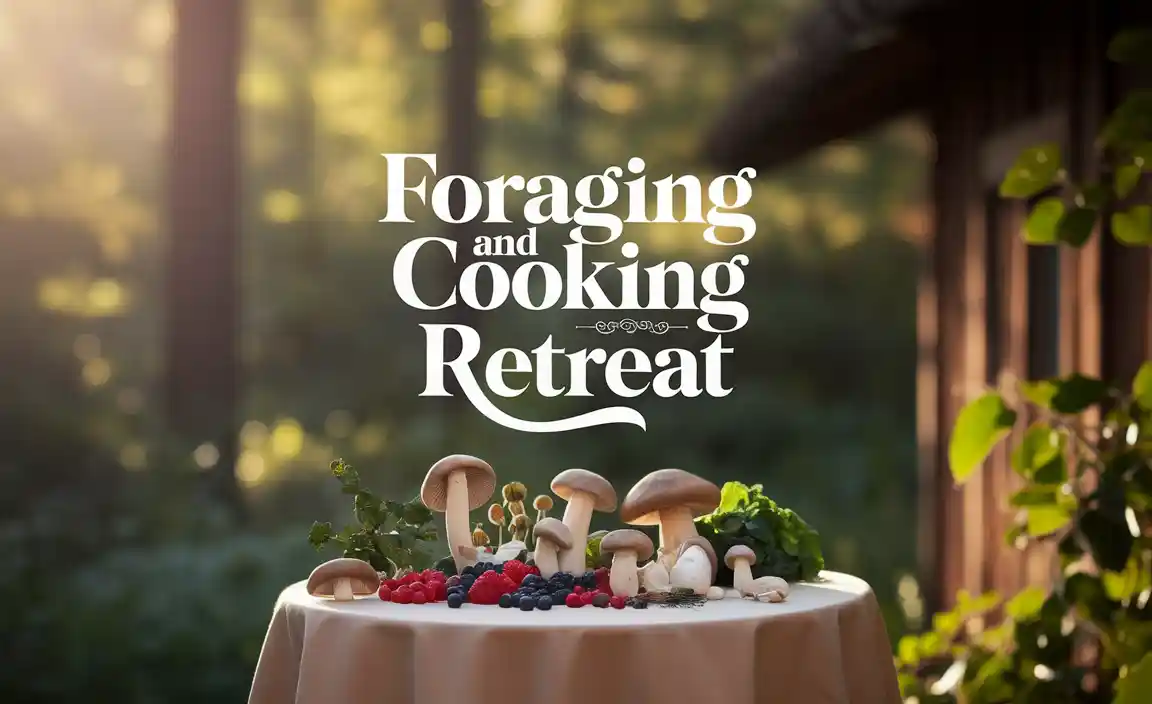
What is a Foraging and Cooking Retreat?
A foraging and cooking retreat is an immersive experience that combines the adventure of searching for wild, edible plants (foraging) with the joy of preparing and enjoying meals made from these natural ingredients. It’s a wonderful way to slow down, reconnect with the earth, and learn valuable skills about nature’s pantry. Imagine spending your day exploring lush forests or meadows, identifying berries, mushrooms, herbs, and greens, and then heading to a cozy kitchen to transform your discoveries into a feast. These retreats often focus on sustainability, seasonal eating, and understanding the local ecosystem.
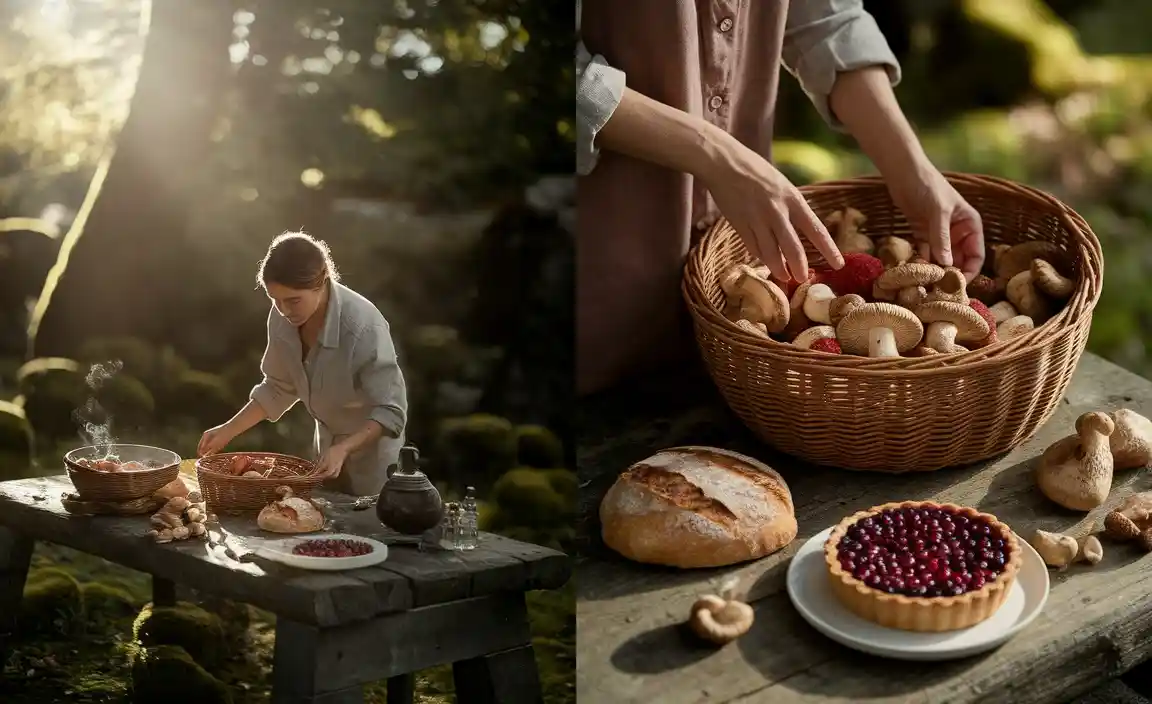
Why Choose a Foraging and Cooking Retreat?
The appeal of a foraging and cooking retreat is multifaceted, touching on health, education, and pure enjoyment. Here are a few reasons why it’s becoming a popular choice:
- Connect with Nature: It offers a chance to unplug from technology and immerse yourself in the natural world, improving mental well-being.
- Learn Sustainable Practices: You’ll gain hands-on knowledge about responsible harvesting, ensuring the environment is protected for future generations.
- Discover New Flavors: Wild edibles often have unique tastes and textures that you won’t find in a grocery store, expanding your culinary horizons.
- Improve Health and Nutrition: Freshly foraged foods are packed with nutrients and free from pesticides.
- Gain Self-Sufficiency Skills: Learning to identify and prepare wild foods builds confidence and a sense of independence.
- Experience a Unique Vacation: It’s an active, engaging, and rewarding way to spend your leisure time, creating lasting memories.
Planning Your Foraging and Cooking Retreat
A successful retreat begins with thoughtful planning. Whether you’re joining a guided retreat or organizing your own, consider these essential elements:
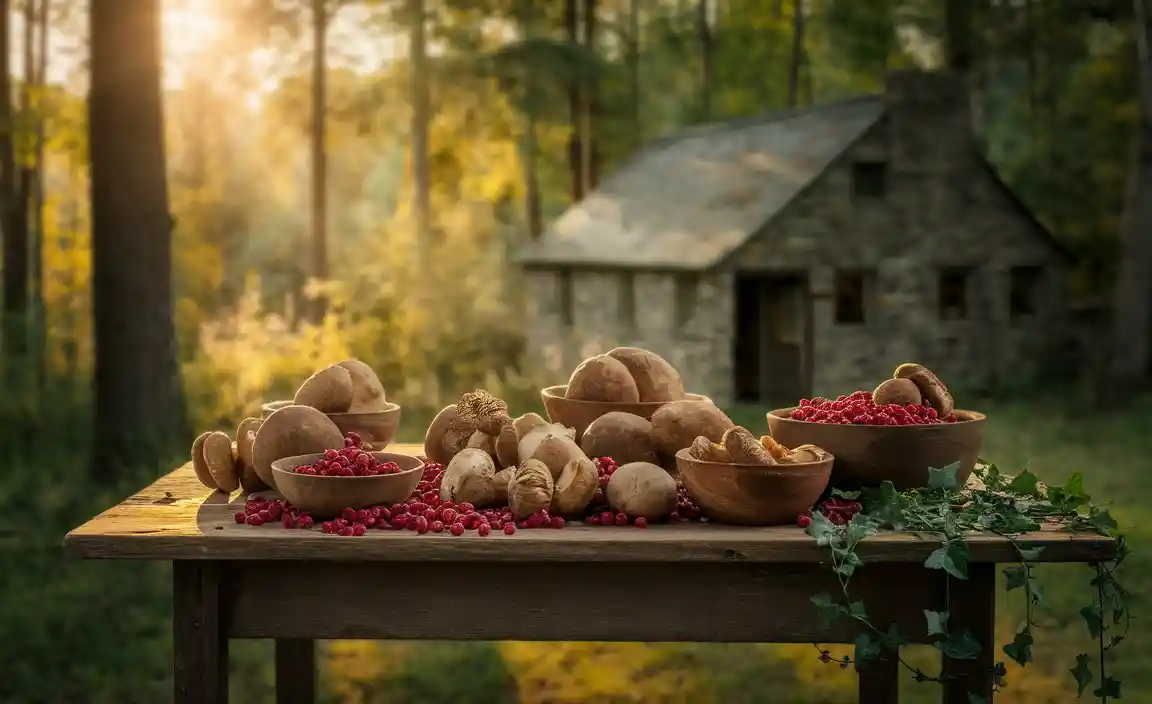
Choosing the Right Location
The location is key to a successful foraging trip. Look for areas that are:
- Rich in Biodiversity: Places with diverse plant life offer more foraging opportunities.
- Accessible and Safe: Ensure you can reach the area easily and that it’s safe for exploration.
- Legal to Forage: Always confirm local regulations. Private land or designated nature reserves may have restrictions. Check with local authorities or park services.
- Seasonal Appropriateness: Different plants are available at different times of the year.
Some excellent general environments for foraging include deciduous woodlands, meadows, coastal areas, and even certain urban green spaces, provided they are free from pollution and pesticides. For example, the U.S. Forest Service offers guidance on foraging on federal lands, which often involves specific permits and rules to protect the ecosystem.
Timing is Everything: Seasonality
Foraging success hinges on understanding seasonality. What you can find will vary dramatically depending on the time of year:
| Season | Common Forageables | Notes |
|---|---|---|
| Spring | Wild garlic, nettles, dandelion greens, morels (a type of mushroom), wood sorrel | Focus on young shoots and leaves; mushrooms start to appear after rains. |
| Summer | Berries (strawberries, raspberries, blueberries), elderflowers, wild mint, chanterelle mushrooms | Plenty of fruits and flowers; diverse mushroom varieties. |
| Autumn | Berries (elderberries, rose hips), nuts (walnuts, acorns), edible mushrooms (porcini, oyster), roots (burdock) | A prime time for nuts, roots, and hearty mushrooms. |
| Winter | Cattail roots, pine needles (for tea), evergreen shoots, some hardy greens | Opportunities are fewer but still present with a keen eye. |
Essential Foraging Tools
Equip yourself with the right tools to make foraging safe and efficient:
- Field Guide/Identification Book: A good, region-specific guide is non-negotiable.
- Basket or Breathable Bag: Prevents delicate items from getting crushed and allows spores to disperse. Avoid plastic bags.
- Gloves: Protect your hands, especially when dealing with thorny plants or stinging nettles.
- Small Knife or Scissors: For cleanly cutting stems and roots.
- Water Bottle: Stay hydrated during your excursions.
- First-Aid Kit: For minor cuts, scrapes, or insect bites.
- Compass or GPS Device: To help you navigate and find your way back.
Safe Foraging Practices: The Golden Rules
Safety is paramount when foraging. Misidentification can lead to illness or worse. Always follow these crucial guidelines:
- Positive Identification is Key: Never eat anything unless you are 100% sure of its identity. If in doubt, leave it out! Use multiple reliable sources for confirmation.
- Learn from Experts: Consider taking a foraging course or going with an experienced guide, especially when starting out.
- Know Your Poisonous Look-alikes: Many edible plants have toxic counterparts. Thoroughly research these and learn to distinguish them.
- Forage in Clean Environments: Avoid areas near busy roads, industrial sites, or places that may have been sprayed with pesticides or herbicides.
- Harvest Sustainably: Take only what you need, and never deplete a patch. Leave plenty for wildlife and for the plant to regenerate.
- Respect Private Property: Always obtain permission before foraging on private land.
- Check Local Regulations: Some plants are protected, and foraging may be restricted in certain parks or reserves. For instance, the Environmental Protection Agency (EPA) provides information on pesticide usage, which is vital for knowing where it’s safe to forage.
- Be Aware of Allergies: Even safe foods can cause allergic reactions in some people. Try small amounts of a new food first.
Common Beginner-Friendly Edibles
Start your foraging journey with plants that are relatively easy to identify and delicious to eat:
- Dandelions: Leaves can be eaten raw in salads (especially young leaves) or cooked. Roots can be roasted.
- Wild Berries: Strawberries, raspberries, blueberries, and elderberries (ensure they are cooked) are usually quite distinct.
- Nettles: Young nettle tops can be cooked into soups, stews, or teas, losing their sting when blanched or heated. Wear gloves when harvesting!
- Chickweed: A common ground cover, its leaves and stems are mild and can be eaten raw in salads or sandwiches.
- Wood Sorrel: Easily recognizable by its clover-like leaves and lemony taste, great for adding a zing to salads.
Cooking with Your Foraged Finds
The real magic happens when you bring your foraged treasures into the kitchen! Here are some tips and ideas:
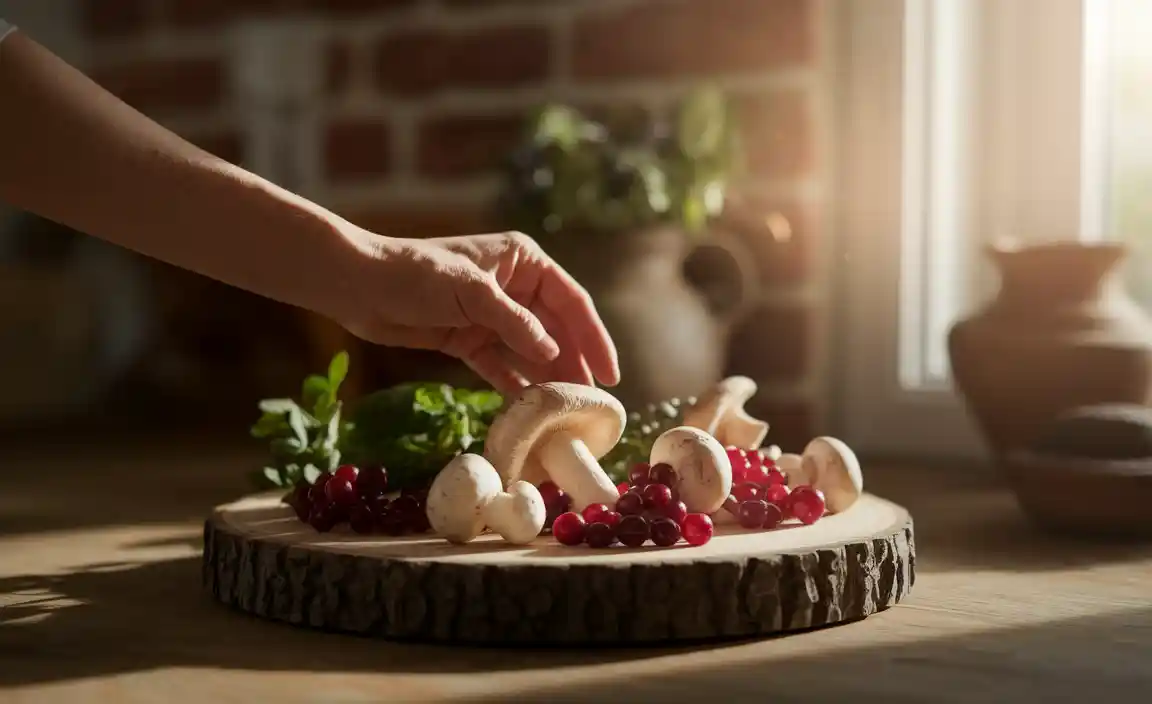
Basic Preparation Techniques
After foraging, your ingredients will need a little preparation:
- Washing: Thoroughly wash all foraged items under cool running water to remove soil, insects, and debris.
- Trimming: Remove any damaged parts, tough stems, or non-edible portions according to your field guide’s recommendations.
- Blanching: For items like nettles that can be irritating raw, blanching in boiling water for a minute or two neutralizes the sting and softens them for further cooking.
- Drying: Ensure greens are well-dried after washing to prevent them from becoming soggy when cooked or stored.
Simple Recipes to Get You Started
Here are a few beginner-friendly recipes to inspire your cooking:
Wild Greens Salad with Lemon Vinaigrette
A simple way to enjoy a variety of fresh, foraged greens.
- Ingredients:
- 2 cups mixed wild greens (e.g., dandelion, chickweed, wood sorrel)
- 1/4 cup edible flowers (optional)
- 2 tablespoons olive oil
- 1 tablespoon fresh lemon juice
- Salt and freshly ground black pepper to taste
- Instructions:
- Gently wash and thoroughly dry your foraged greens and flowers.
- In a small bowl, whisk together olive oil and lemon juice. Season with salt and pepper.
- Toss the greens and flowers with the vinaigrette just before serving.
Nettle Soup (Creamy & Comforting)
A classic way to enjoy nutrient-rich nettles.
- Ingredients:
- 4 cups young nettle tops (gloves needed for harvesting and handling)
- 1 tablespoon olive oil or butter
- 1 small onion, chopped
- 2 cloves garlic, minced
- 4 cups vegetable or chicken broth
- 1/2 cup milk or cream (optional, for richness)
- Salt and pepper to taste
- Instructions:
- Wear gloves! Blanch nettle tops in boiling water for 1 minute, then drain and rinse with cold water. Squeeze out excess water.
- Heat oil/butter in a pot over medium heat. Sauté onion until softened, then add garlic and cook for 1 minute more.
- Add broth and blanched nettles to the pot. Bring to a simmer and cook for 10 minutes.
- Carefully transfer the soup to a blender (or use an immersion blender) and blend until smooth.
- Return soup to the pot. Stir in milk/cream if using. Heat gently without boiling.
- Season with salt and pepper to taste. Serve hot.
Foragers’ Berry Crumble
A sweet and rustic dessert showcasing seasonal berries.
- Ingredients:
- 3 cups mixed wild berries (fresh or frozen)
- 1/4 cup sugar (adjust to berry sweetness)
- 1 tablespoon cornstarch
- For the Crumble Topping:
- 1 cup all-purpose flour
- 1/2 cup rolled oats
- 1/2 cup brown sugar
- 1/4 teaspoon salt
- 1/2 cup cold butter, cut into cubes
- Instructions:
- Preheat oven to 375°F (190°C).
- In a bowl, toss berries with sugar and cornstarch. Pour into a greased baking dish.
- In another bowl, combine flour, oats, brown sugar, and salt for the crumble.
- Cut in the cold butter using your fingertips or a pastry blender until the mixture resembles coarse crumbs.
- Sprinkle the crumble topping evenly over the berries.
- Bake for 30-40 minutes, or until the topping is golden brown and the berry filling is bubbly.
- Let cool slightly before serving, perhaps with a scoop of ice cream or cream.
Important Note on Mushroom Foraging
Mushroom foraging is incredibly rewarding but also carries the highest risk. Many edible mushrooms have deadly poisonous look-alikes. If you are not an expert or accompanied by one, it is strongly advised to stick to easily identifiable mushrooms like morels or chanterelles after thorough research and ideally, guidance from an experienced mycologist. Resources from organizations like the North American Mycological Association (NAMA) are invaluable for understanding safe practices.
Where to Find Foraging and Cooking Retreats
If you prefer a guided experience, numerous retreats cater to all levels of expertise. You can find them in various beautiful natural settings:
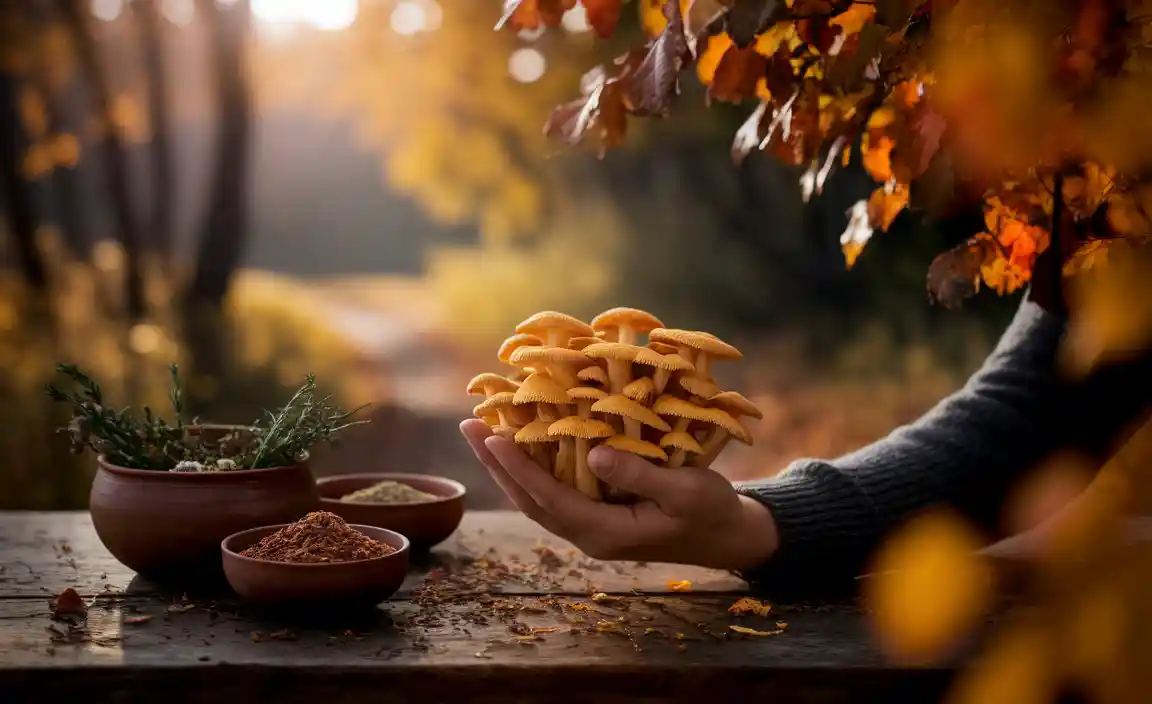
- Online Search: Use terms like “foraging retreat,” “wild food workshop,” or “nature cooking course” along with your desired location.
- Local Nature Centers and Botanical Gardens: Many offer workshops and may know of local foraging experts or retreats.
- Foraging Organizations: Groups dedicated to foraging often have lists of events and instructors.
- Farm Stays and Eco-Lodges: Some offer integrated foraging and cooking experiences as part of their packages.
- Word of Mouth: Talk to friends, local chefs, or farmers’ market vendors – they might have recommendations.
When choosing a retreat, look for experienced, reputable instructors, a focus on safety and sustainability, and a curriculum that matches your interests and skill level. Many reputable retreats include accommodations, meals featuring foraged ingredients, and hands-on learning sessions.
Frequently Asked Questions
Q1: What is the biggest danger in foraging?
A1: The biggest danger is misidentifying a plant or mushroom and consuming a poisonous variety. This can lead to severe illness, organ damage, or even death. Always be 100% certain of your identification.
Q2: Can I forage in public parks?
A2: It depends on the park and local regulations. Many public parks prohibit foraging to protect the environment and ensure fairness. Always check the rules of the specific park or contact the local parks department before foraging.
Q3: How do I know if something is safe to eat?
A3: You must use reliable field guides, cross-reference with multiple sources, and ideally learn from an experienced forager. Never experiment with unknown plants. If there is any doubt at all, do not eat it.
Q4: What’s the difference between foraging and gardening?
A4: Foraging involves finding and harvesting wild plants in their natural habitats, while gardening is about intentionally cultivating plants in a controlled environment. Foraging relies on what nature provides, whereas gardening involves human intervention in planting, nurturing, and harvesting.
Q5: How should I store foraged foods?
A5: Storage varies by item. Fresh greens should be stored in the refrigerator, often wrapped in a damp cloth or paper towel. Berries can be eaten fresh, preserved, or frozen. Dried herbs and mushrooms should be kept in airtight containers in a cool, dark place.
Q6: Are there foraging apps that can help identify plants?
A6: While some apps use AI for plant identification, they are not always 100% accurate and should never be your sole source of identification. They can be a helpful secondary tool, but always confirm with a physical field guide and expert knowledge.
Conclusion
Embarking on a foraging and cooking retreat is an enriching adventure that nourishes both body and soul. It’s an opportunity to step away from the hustle of daily life and truly connect with the natural world, learning ancient skills that are more relevant than ever. By prioritizing safety through diligent identification and responsible harvesting, you can unlock a world of unique flavors and incredible freshness. Whether you attend a guided retreat or venture out on your own, remember that patience, curiosity, and respect for nature are your most important companions. Happy foraging, and happy cooking!